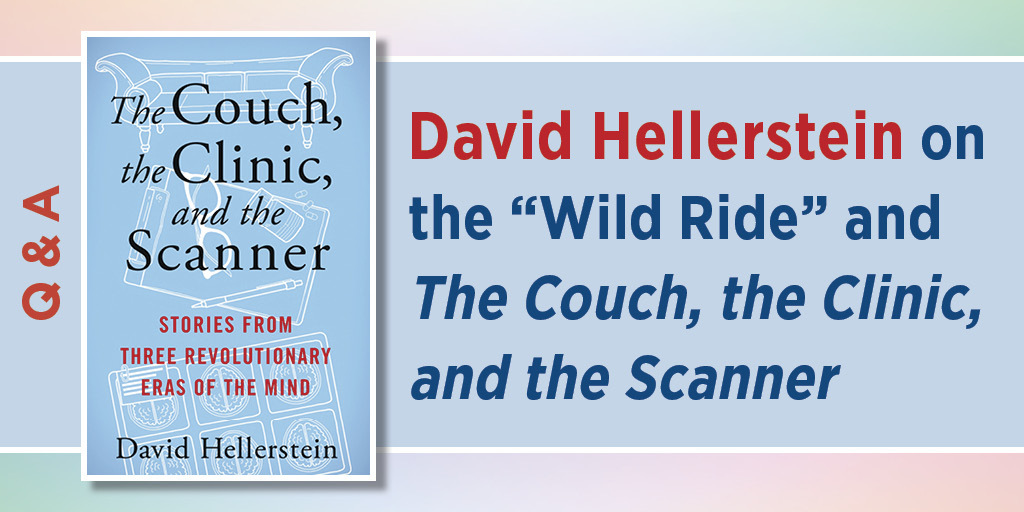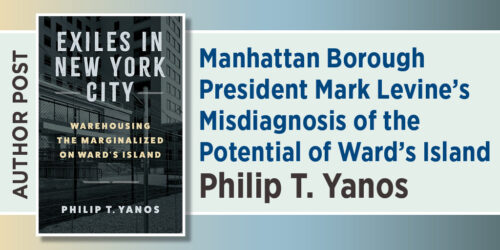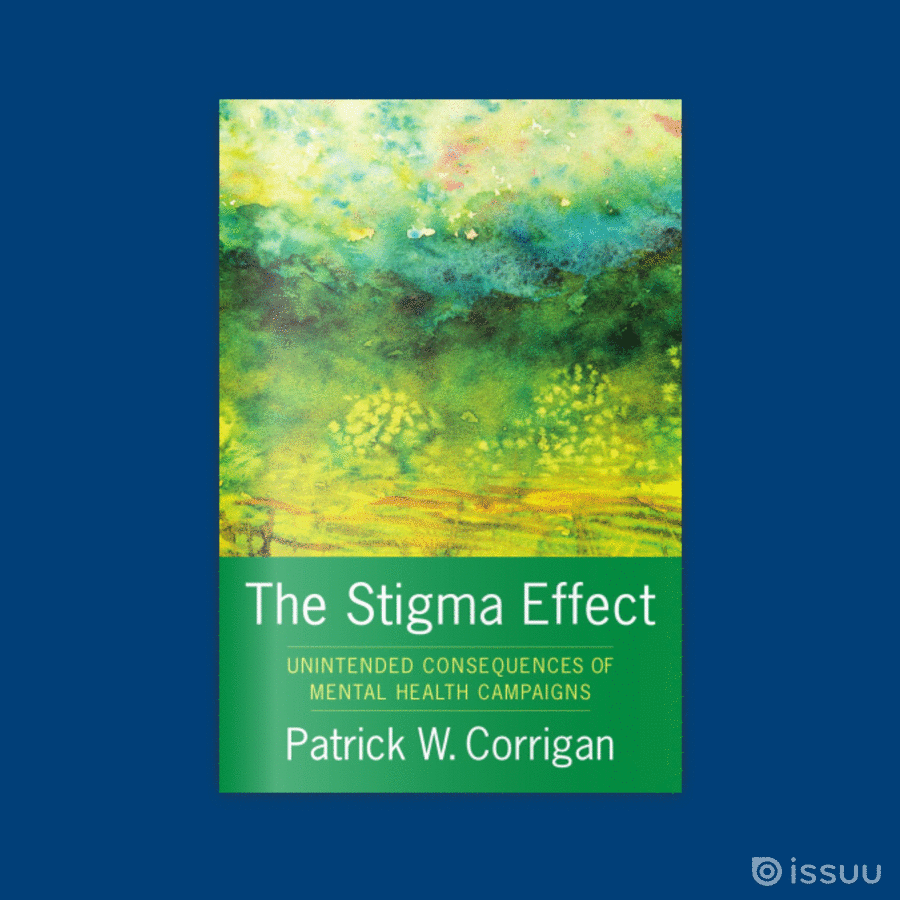Q&A: David Hellerstein on the “Wild Ride” and The Couch, the Clinic, and the Scanner

The Couch, the Clinic, and the Scanner, Dr. David Hellerstein’s new book, consists of fourteen personal chapters that capture the momentous changes in psychiatry over the past half century. Rather than a conventional dispassionate narrative, the tales told here explore highly tumultuous changes in a medical specialty that has repeatedly remade itself. Dr. Hellerstein is a professor of clinical psychiatry at Columbia and conducts research on treatments of mood and anxiety disorders, most recently investigating psychedelic compounds. For two decades he has also taught a course in creative nonfiction to Columbia medical students entitled The City of the Hospital, which teaches narrative medicine methods as ways of exploring the ever-changing world of becoming a doctor.
Q: Why did you write The Couch, the Clinic, and the Scanner?
Dr. David Hellerstein: I really felt the need to tell the story of psychiatry’s changing models in an engaging way. The changes in psychiatry over recent decades, what the historian of science Thomas Kuhn called paradigm shifts, have been disruptive, controversial, and in many ways nonlinear. We have had one major upheaval after another. And as a practicing psychiatrist and an educator and researcher, I have seen my own career—like those of many colleagues—profoundly and repeatedly disrupted. When I began medical school in the late 1970s, the psychoanalytic model that had dominated American psychiatry since the 1950s still held sway. Then, throughout the 1980s and ’90s, the DSM-based model—from the third edition of the Diagnostic and Statistical Manual—became the default model of treatment. Finally, around the turn of the millennium, neuroscience swept through research and medical education and is now having a profound effect on clinical care for the first time. It has been, as one reader of The Couch, the Clinic, and the Scanner recently put it, “a wild ride”!
Q: What has made the ride so wild?
Dr. Hellerstein: These transitions have been massively nonlinear. Each of these models has radically different explanations for the causes and cures of psychiatric ills, and each prescribes different treatment approaches with very different goals. For psychiatrists, psychologists, and other mental health clinicians—and I suspect for patients as well—these shifts have been challenging and often baffling, even disorienting.
When I decided to write a book about these changes, it seemed to me that stories from my career would be one powerful way to explore them—through lived experiences, so to speak, exploring how my colleagues and I wrestled with these upheavals, these radical changes in vision. I started out wanting to become a psychoanalyst, became an enthusiastic DSM psychiatrist, and ended up as a neuroscience-minded researcher, doing studies combining clinical trials with neuroimaging. So my career has really embodied these changes. On a broader level, I wanted to tell the history through stories because stories, especially personal stories, are so central to all specialties of medicine, including psychiatry.
Q: How do stories tell the history of medicine? Why are they important?
Dr. Hellerstein: Medicine has always centered around stories, both in medical education and practice. I remember from my earliest days—one of six children in Ohio—hearing my parents tell about their patients and experiences in the hospital. My dad was a cardiologist and exercise physiologist; Mom was a pediatrician; and innumerable other relatives were doctors and nurses and other healthcare workers. Dad would take us kids down to the hospital; Mom would bring us to the urban clinic where she worked. And they would both tell stories about patients encountered and lives saved and lost. Their stories were the most elegant way of connecting these disparate experiences.
Today, the process of becoming a doctor, while ever more deeply science-based, still relies upon stories, told in classes and rounds and at the bedside. Narratives integrate the scientific and the personal, the social and biological and genetic realities, as they affect the body and mind of an individual patient, and stories illuminate their course of illness or healing.
Q: You said that stories are also central to psychiatry?
Dr. Hellerstein: Of course, psychiatry relies upon stories. For one thing, telling and retelling personal narratives of suffering and healing is traditionally the basis of psychotherapy. We hear the story of the person in our consulting room who is miserable and feeling at a dead end, perhaps even suicidal, and we work collaboratively with the patient over time to recast and retell their story—until it embodies more hope, a life of possibilities.
Q: How do stories differ between the three models of psychiatry—psychoanalytic, DSM-based, and neuroscience-based?
Dr. Hellerstein: They are often profoundly different. The same case can be formulated in so many different ways. It makes me think of Wallace Stevens poem, “Thirteen Ways of Looking at a Blackbird” or Kurosawa’s masterpiece, Rashomon. The psychoanalyst explores early trauma and attachment issues and uses free association and analysis of dreams to aim for a cure. DSM psychiatrists make precise diagnoses using reliable (though not always valid) criteria; then they prescribe evidence-based treatments, whether medications or manual-based psychotherapies. These days, the neuroscience-minded psychiatrist applies knowledge from imaging and lab studies to hypothesize about over-connected dysfunctional brain networks, and prescribes a broader range of different interventions, from meditation and exercise to brain stimulation treatments, with goals of enhancing brain health and neuroplasticity. Traditionally in science, each model builds on the last, and there are some continuities: neuroscience-minded psychiatrists may still be mindful of psychodynamics and DSM diagnoses, but their approaches are fundamentally different.
Q: Can you give some examples of stories from The Couch, the Clinic, and the Scanner?
Dr. Hellerstein: Well, the story of love and learning psychotherapy. In one story, I tell of a patient who fell in love with me when I was beginning residency training, which was profoundly unsettling, and how I realized in talking with my classmates that it was a nearly universal experience of learning psychoanalytic therapy. Later in the book, I tell of a patient who haunted our emergency room at a downtown hospital, who had innumerable failed hospitalizations, and whose life was accidentally rescued by a new medication. I tell of the depredations of managed care, which decimated clinics and has exacerbated today’s society-wide mental health crisis. There’s the story of a couple whose lives were transformed by a correct diagnosis but whose marriage could not be saved. At the end of the book, I talk about a new disruptive factor that has recently emerged—the rediscovery of psychedelic drugs as possible therapeutic agents. This last story is still being told, and it’s not clear how it will end.
Q: How will the psychedelic renaissance affect psychiatry?
Dr. Hellerstein: I wish I knew. Perhaps it will integrate the three previous models? Or perhaps it will add new dimensions to our understanding of illness and psychic healing, which may surprisingly involve mystical and spiritual experiences. I’m looking forward to finding out.




